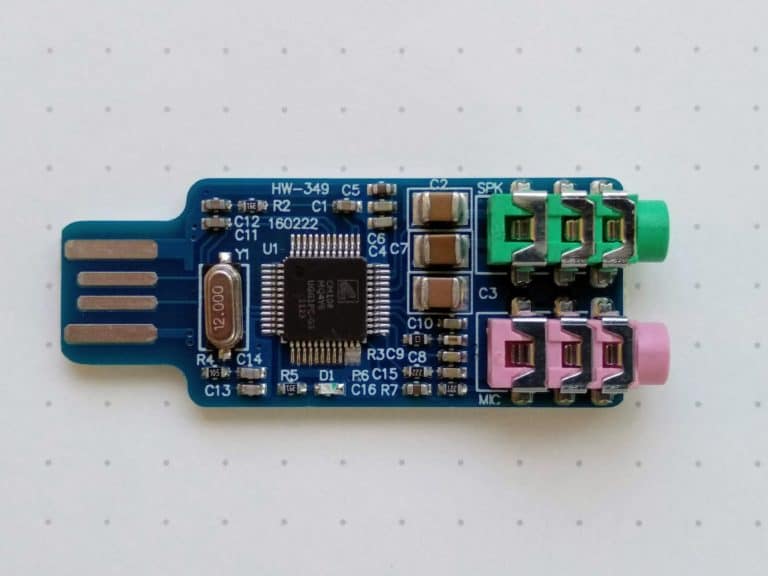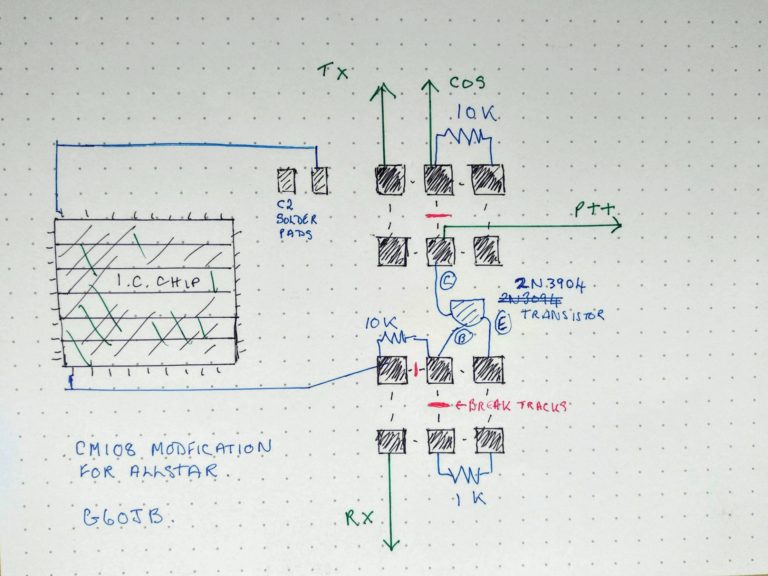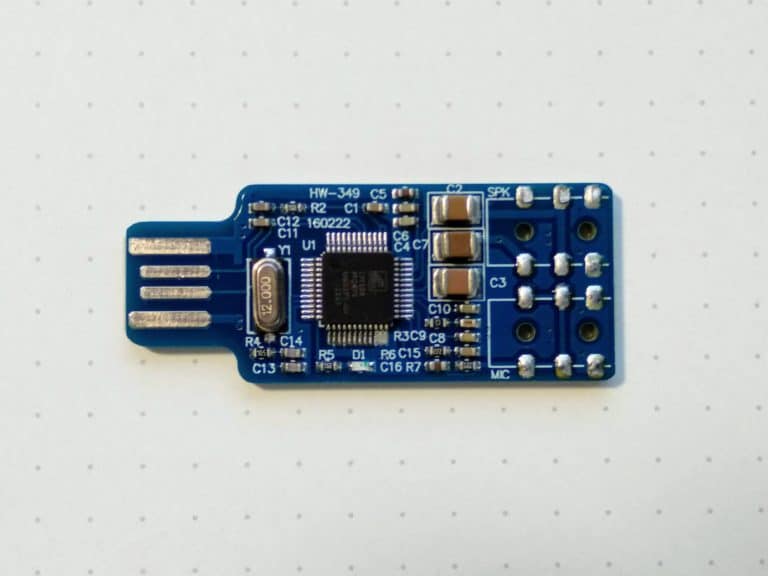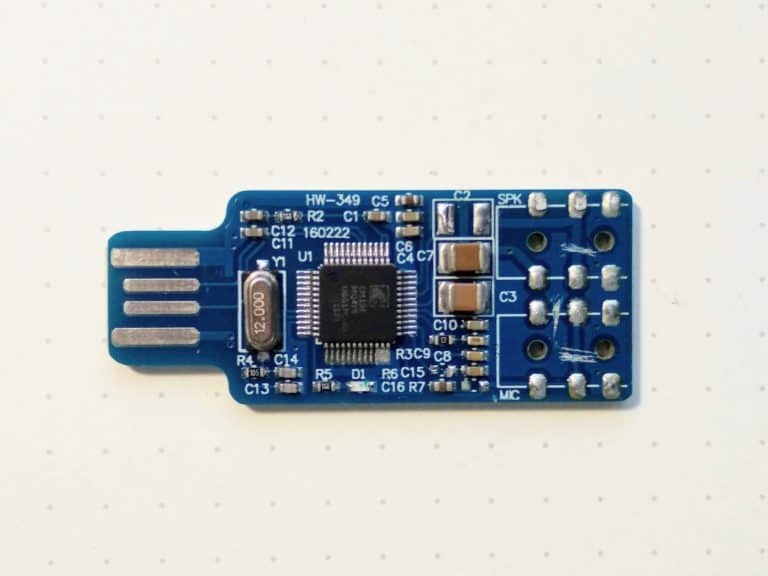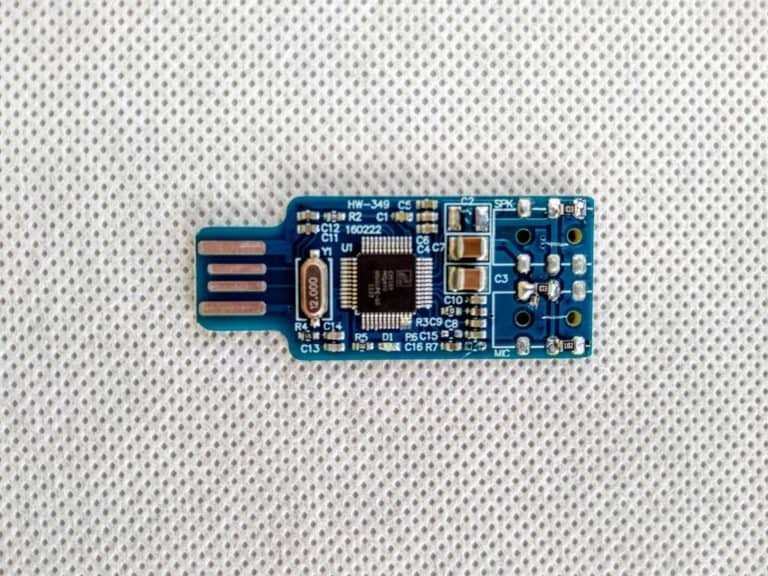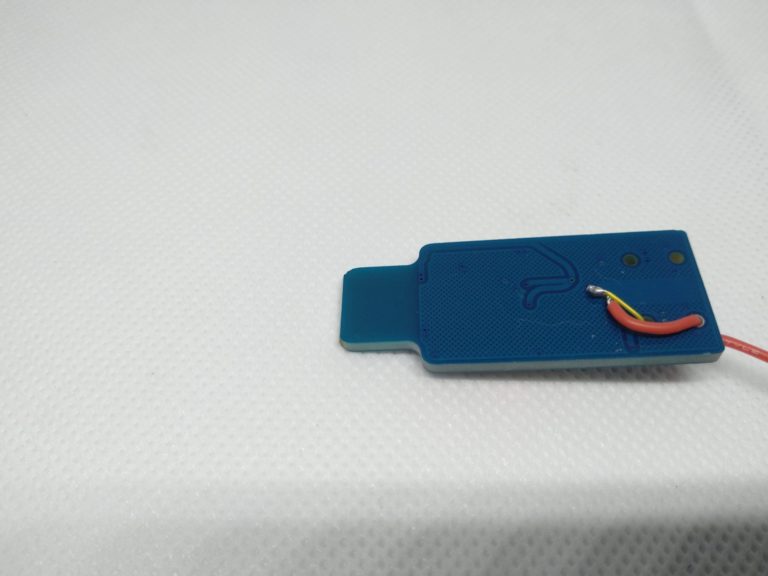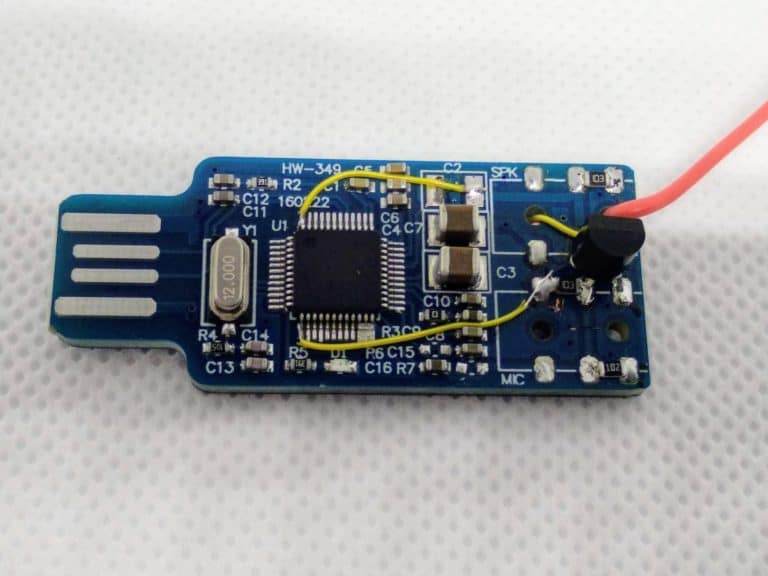Modifying the CM108 sound card for use with Allstar. With surface mount resistors.
I am finding that using surface mount resistors instead of conventional ones makes for a much neater job visually and also it makes the modification of the fob much easier and quicker. The spacing between the solder pads on the CM108 is just right for utilising these tiny devices. Using a conventional transistor with its legs cut short also suits the solder pads. You can drop the three resistors and the transistor on to the board in about two minutes flat!
I have a notion that nodes built in this way tend to have better sound quality, perhaps because the longer legs on the conventional resistors in my original design may attract RFI.
Step by step instructions below …
Step 7. Finally, just Add the four wires to hook the sound fob up to your radio.
The above photo shows a completed sound fob which is ready to insert into a node, and this may be enough for your needs particularly if you use the excellent Node Remote app to control the node.
However, if you visit my More section you will find instructions on how to further modify the fob to include indicator lights for the front panel. This is a simple matter and no coding is required. : LINK

